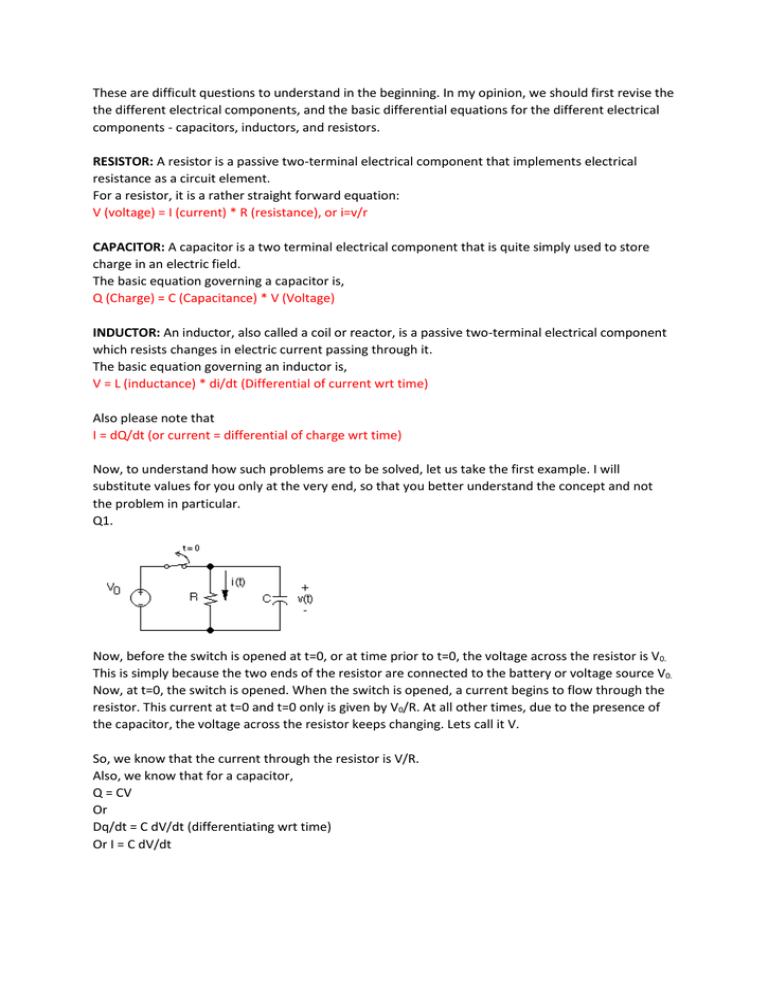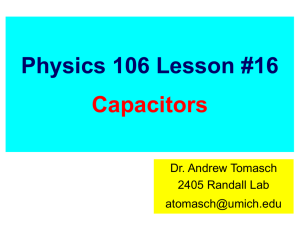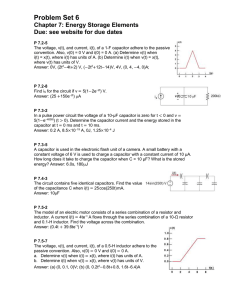These are difficult questions to understand in the beginning. In my
advertisement

These are difficult questions to understand in the beginning. In my opinion, we should first revise the the different electrical components, and the basic differential equations for the different electrical components - capacitors, inductors, and resistors. RESISTOR: A resistor is a passive two-terminal electrical component that implements electrical resistance as a circuit element. For a resistor, it is a rather straight forward equation: V (voltage) = I (current) * R (resistance), or i=v/r CAPACITOR: A capacitor is a two terminal electrical component that is quite simply used to store charge in an electric field. The basic equation governing a capacitor is, Q (Charge) = C (Capacitance) * V (Voltage) INDUCTOR: An inductor, also called a coil or reactor, is a passive two-terminal electrical component which resists changes in electric current passing through it. The basic equation governing an inductor is, V = L (inductance) * di/dt (Differential of current wrt time) Also please note that I = dQ/dt (or current = differential of charge wrt time) Now, to understand how such problems are to be solved, let us take the first example. I will substitute values for you only at the very end, so that you better understand the concept and not the problem in particular. Q1. Now, before the switch is opened at t=0, or at time prior to t=0, the voltage across the resistor is V0. This is simply because the two ends of the resistor are connected to the battery or voltage source V0. Now, at t=0, the switch is opened. When the switch is opened, a current begins to flow through the resistor. This current at t=0 and t=0 only is given by V0/R. At all other times, due to the presence of the capacitor, the voltage across the resistor keeps changing. Lets call it V. So, we know that the current through the resistor is V/R. Also, we know that for a capacitor, Q = CV Or Dq/dt = C dV/dt (differentiating wrt time) Or I = C dV/dt Using Kirchoffs Current Law, we get V/R + C dV /dt = 0 Now all we need to do is rearrange and integrate. We get, - dt/RC = dv/V Integrating time from 0 to t, and voltage from V0 to V, we get, -t/RC = ln (V/V0) Or, V/V0 = e-t/RC Now plugging in values, we know that V0 = 2, R = 2, C = 0.5 Thus we get V = 2e-t A rather simple place to understand this question is through the wiki page at: http://en.wikipedia.org/wiki/RC_circuit We can develop our understanding further through Q2. Q2. Now, remember the basic differential equation for the inductor? It is, V = L di/dt Also, V=iR After the switch is closed at t = 0, focus on the later half of the circuit: Remember Kirchoffs Voltage law: Using the law we get, Ldi/dt + iR = 0 (Since they form a closed loop) Rearranging, di/i = - R/L dt Integrating under the limits I0 to I, and t =0 to t, we get, ln (I/I0) = -t R/L or i = i0 e –t R/L Substituting values, we get, i = 3e-t Now, I’ll illustrate the third problem as well. After this, you are sure to be able to understand the basics easily. Q3. Once the switch is closed, a current will begin to flow in the circuit. Remember the equations from the first page? The current flowing through the resistor, and the current flowing through the capacitor will also be the same, since they are in the same loop. So how do we proceed? Find an equation for the current through the resistor. The current is the potential difference by the resistance. The potential difference is V0 – V(t). Correct? Therefore, [ V0 – V(t) ] / R = C dV(t)/dt [ Remember the capacitor equation? Scroll up if you’ve forgotten] Once again, rearranging shows, dV / (V0 – V) = dt/ RC Now, the limits for voltage will be from 0 to V, as mentioned in the question. For time, it’ll be 0 to t. Also, it is known that V0 is 10 Volts, R = 2, C = 2. We get, ln (V0 - V/V0 – 0 ) =- t / RC [The minus sign comes because the denominator is V0- V. The –V needs to be substituted. To understand, just take V0- V to be x. Then, dx = -dV. Hence.] or ln [(10-V)/10] = - t/4 or 10-V/10 = e-t/4 or 10 – V = 10 e-t/4 or V = 10 [1 - e-t/4 ] Which is the required answer. After looking at the above three examples, I hope you have understood how to solve such questions. The process is as follows: 1) Jot down all knowns and unknowns in the question. Take particular care to note down your observations for time t<0 , t=0 and t>0. Often times the question will ask for some value in terms of t>0. 2) Form the basic equation for the circuit. This can involve Kirchoff’s Current Law, which states that : At any node (junction) in an electrical circuit, the sum of currents flowing into that node is equal to the sum of currents flowing out of that node, or: The algebraic sum of currents in a network of conductors meeting at a point is zero. http://en.wikipedia.org/wiki/Kirchhoff%27s_circuit_laws and the Kirchoffs Voltage Law (KVL) which states that: 3) Once you have formed your basic equation, write down the differential equations I mentioned on the first page. 4) Rearrange the equation so obtained so that you have differentials of the same variable on the same side (dv should be paired with all v’s and dt with all t’s etc.) 5) Integrate under the limits, and voila, your problem is solved. I’ll illustrate the above through another question. Q10. 1) The circuit is in equilibrium for t < 0, and the switch closes when t = 0. If V0 = 4 V, R1 = 2 , R2 = 2 and C = 2 F. 2) Once the switch is closed, a current will flow from the voltage source into resistor R1, and then will divide into two currents, one through resistor R2, and one through C. 3) [V0 – V(t) ]/ R1 = V(t) / R2 + C dV(t)/dt or (4 – V)/ 2 = V/2 + 2 dV/dt 4) Rearranging, 2 – V = 2 dV/dt or 2 dV /(2-V) = dt 5) Integrating V from 0 to V, and t from 0 to t, we get, 2 ln [(2-V)/2] = -t or 2- V = 2 e-t/2 or V = 2[1 – e-t/2] Which is the answer. Now conceptually, why does the equation with time even enter the picture? Its simply because changes don’t occur instantaneously. For instance, a charge cannot simply develop across a capacitor. It builds up slowly through electrons and gradually comes close to its final value (though theoretically it reaches it only at t = infinity). Hence, transient equations are developed. I am enlisting two links for transient analysis as well. Please do go through them as they will help you develop an even clearer picture regarding the same. http://www.homeworkforarabs.com/wp-content/uploads/2013/10/BECA_07.pdf http://www.ece.mtu.edu/labs/EElabs/EE3010/Lecture%20Notes/Chapter%2004.pdf Please find attached the doc. file for this lesson, as some formulae or images might not be very clear. I hope this helped you understand the concept of transients and you will be able to apply them in your sums. Please feel free to contact me for a lesson at any time on this topic. Also, please do review my answer, if you find it appropriate and what you were looking for. Would really appreciate your feedback. Cheers, and all the best. Siddharth Daga







